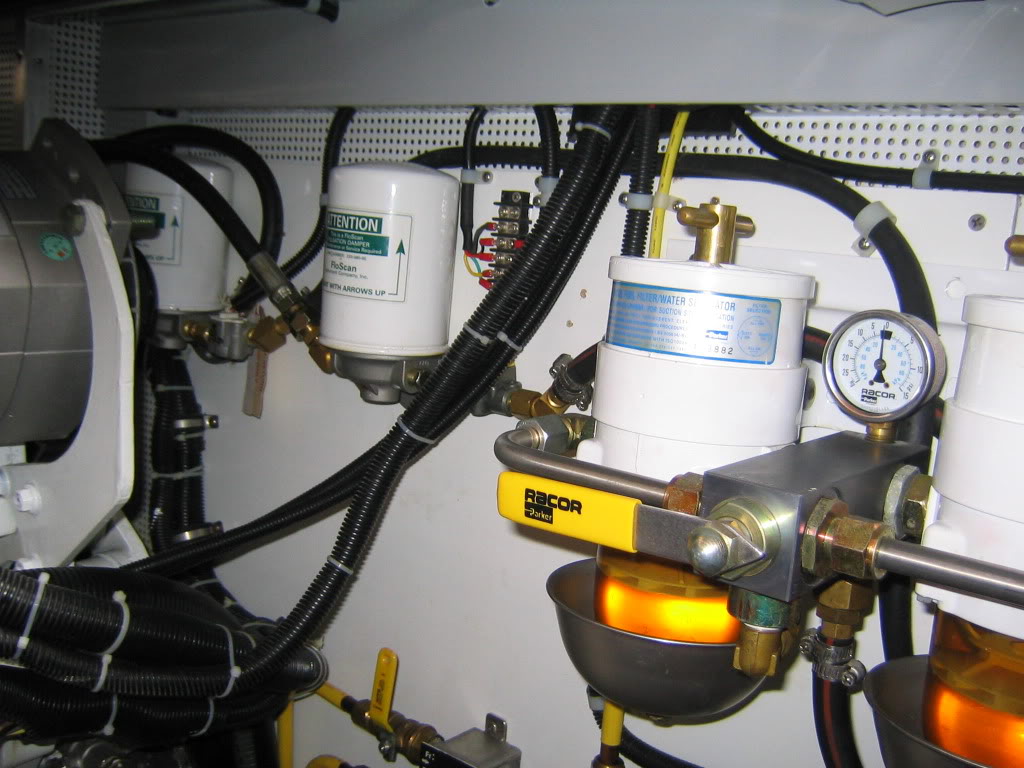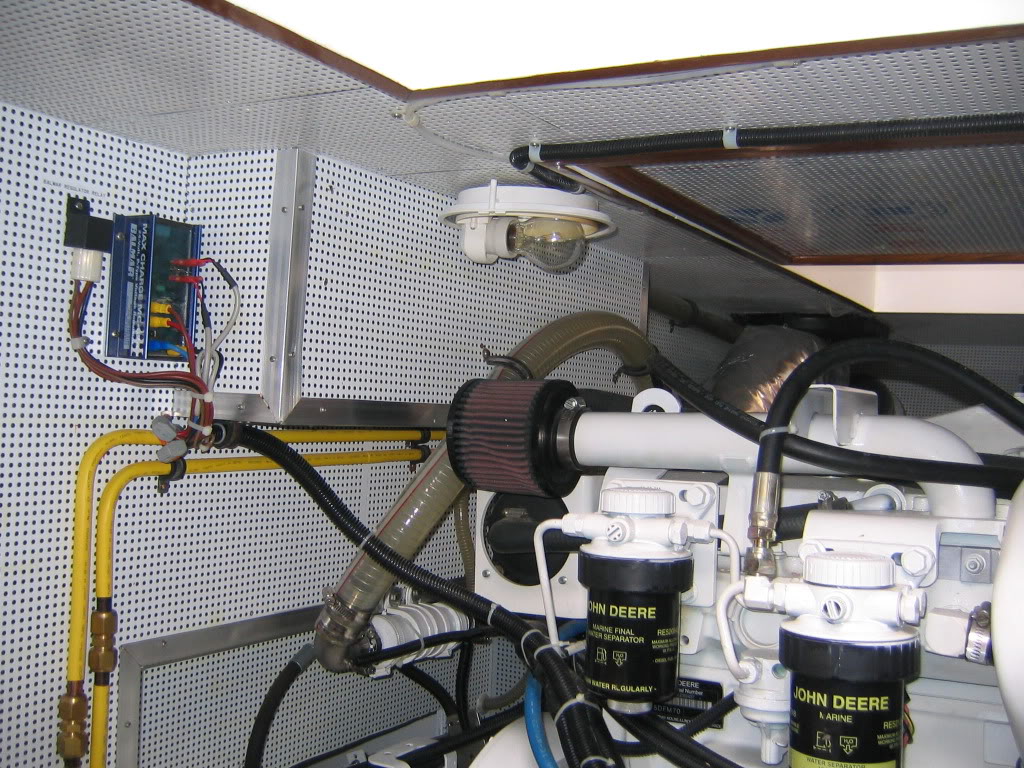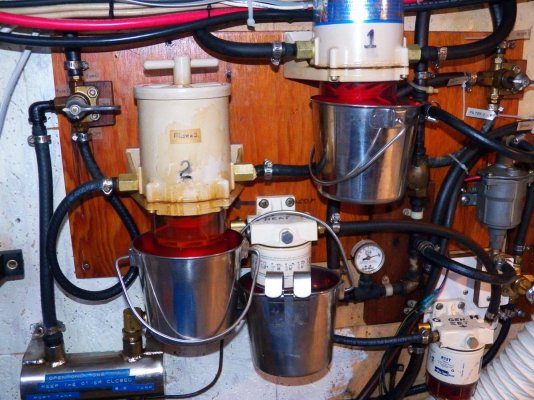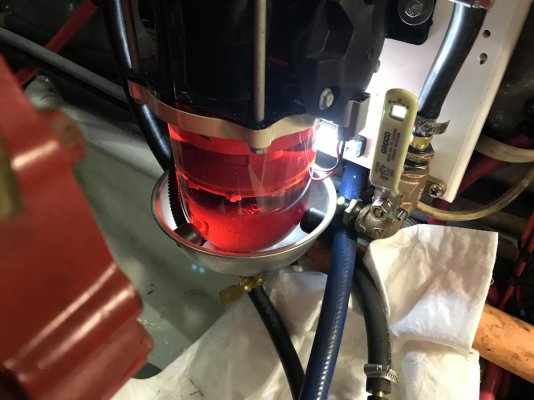Looking at pictures of filters and systems I wonder if the yards of fuel hoses aren't just as vulnerable to the fire hazzard, and how would they fare in the 2.5 minute test?
Maybe I shouldn't wonder too much the gubmint could have us replacing them all with SS tubing?!
FEDERAL LAW
183.540 - Hoses: Standards and markings
(a) "USCG Type A1" hose means hose that meets the performance requirements of:
(1) SAE Standard J1527 DEC85, Class 1 and the fire test in Sec.
183.590; or
(2) Underwriters’ Laboratories, Inc. (UL) Standard 1114.
33 CFR 183.590 - Fire test.
prev | next
§ 183.590
Fire test.
(a) A piece of equipment is tested under the following conditions and procedures:
(1) Fuel stop valves, “USCG Type A1” or USCG Type A2” hoses and hose clamps are tested in a fire chamber.
(2) Fuel filters, strainers, and pumps are tested in a fire chamber or as installed on the engine in the boat.
(3) Fuel tanks must be tested filled with fuel to one-fourth the capacity marked on the tank in a fire chamber or in an actual or simulated hull section.
(b) Each fire test is conducted with free burning heptane and the component must be subjected to a flame for 2 1/2 minutes
(b) "USCG Type A2" hose means hose that meets the performance requirements of SAE Standard J1527 DEC85, Class 2 and the fire test in Sec 183.590;
(c) "USCG Type B1" hose means hose that meets the performance requirements of SAE Standard J1527 DEC85, Class 1.
(d) "USCG Type B2" hose means hose that meets the performance requirements of SAE Standard J1527 DEC85 Class 2.
NOTE: SAE Class 1 hose has a permeation rating of 100 grams or less fuel loss per square meter of interior surface in 24 hours.
SAE Class 2 hose has a permeation rating of 300 grams or less fuel loss per square meter of interior surface in 24 hours.





